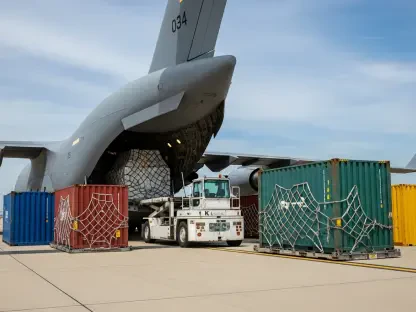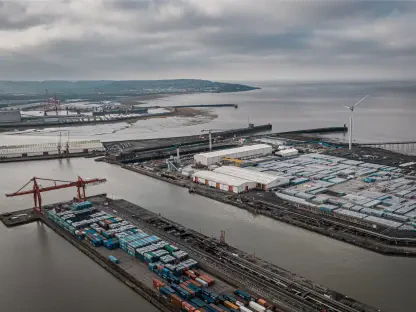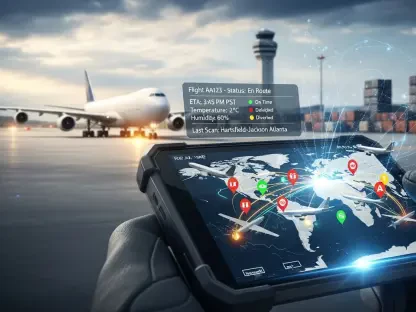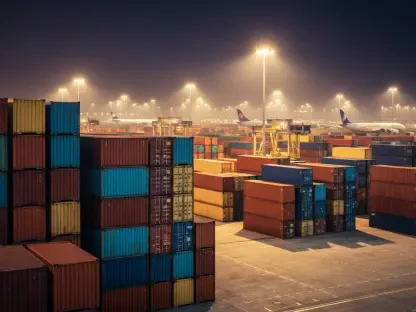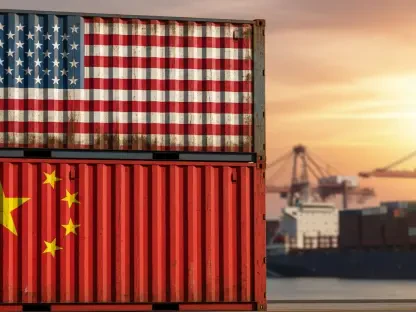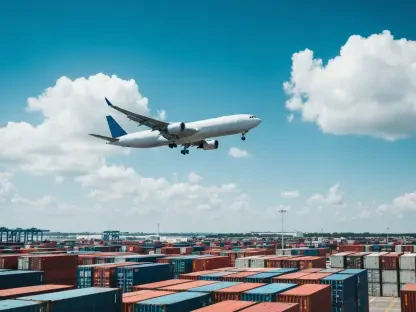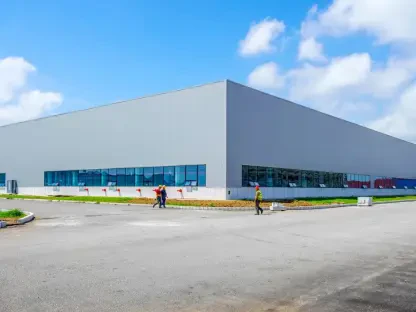The launch of Embraer’s E-Freighters marks a significant milestone in the aviation industry, reflecting the evolving dynamics and strategic decisions of key stakeholders. This article delves into the journey of Embraer’s E-Freighter program, highlighting the partnerships, market shifts, and strategic realignments that have shaped its trajectory.
Embraer’s Entry into the Air Freight Market
The Initial Agreement with Astral Aviation
In July 2022, Embraer announced its foray into the air freight market with the E-Freighter program at the Farnborough International Airshow. Astral Aviation, a Kenyan all-cargo airline, was set to be the launch operator for the E190F E-Freighter aircraft. This partnership, facilitated by Nordic Aviation Capital (NAC), aimed to leverage the growing demand for air freight driven by e-commerce and modern trade logistics. Embraer’s strategy to venture into the air freight market was driven by the need to provide a flexible and efficient cargo solution, capitalizing on the unique features of its E190 and E195 models.
Astral Aviation’s decision to become the launch operator for the E190F was a calculated move to modernize and diversify its fleet. With the increasing importance of e-commerce and fast logistics services, the ability to quickly and economically move goods has become crucial. Astral Aviation recognized the potential of Embraer’s E190F to reshape the landscape of regional air freight, providing a competitive edge in a rapidly evolving market. The initial agreement at Farnborough was seen as a stepping-stone toward a new era of air cargo operations in Africa and beyond, bringing modern technological advancements into the sector.
Advantages of the E-Freighter Program
Embraer’s E-Freighter program promised several advantages, including over 50% more volume capacity, three times the range of large cargo turboprops, and up to 30% lower operating costs than narrow-body aircraft, positioning the E-Freighters as a competitive option for airlines and leasing companies looking to optimize their cargo operations. These benefits are particularly relevant in an industry where cost efficiency and operational flexibility are paramount for maintaining profitability and meeting customer demands.
The capacity for more volume and a longer range means that E-Freighter aircraft can handle larger shipments and serve more distant routes, making them especially valuable for regions with logistical challenges. The lower operating costs translate into reduced fuel consumption, lower maintenance fees, and enhanced overall efficiency, which are critical factors for operators looking to remain competitive. This trifecta of increased capacity, range, and reduced costs gave Embraer a strong value proposition that appealed to strategic decision-makers in airlines and leasing companies alike.
Strategic Shifts and Postponements
Astral Aviation’s Decision to Postpone
In October 2023, Astral Aviation decided to postpone the acquisition of the two E190F aircraft. Sanjeev Gadhia, founder and CEO of Astral Aviation, cited a misalignment with the airline’s fleet strategy for the intra-African market as the reason for this decision, reflecting a shift in market conditions or strategic priorities for Astral Aviation. This decision was indicative of the rapidly changing market environment and the constant need for airlines to reassess and realign their strategic goals accordingly.
The postponement by Astral Aviation does not necessarily spell the end of their interest in the E190F but rather reflects the importance of flexibility in fleet management. As market dynamics shift, airlines must continually evaluate the suitability of their fleet to meet evolving demands and opportunities. Gadhia’s comments underscore the necessity for strategic agility in responding to market changes, even if it involves delaying significant acquisitions. This move illustrates the broader challenges and considerations that airlines face as they navigate the complexities of the air freight landscape.
Impact on Embraer and NAC
Despite Astral Aviation’s postponement, Embraer continued to advance its E-Freighter program, demonstrating resilience and adaptability in the face of changing circumstances. Embraer had planned to begin deliveries in 2024, with the aircraft for conversion coming from NAC’s existing E190/E195 fleet. Embraer’s strategic persistence highlights the company’s commitment to pushing forward with its E-Freighter initiative regardless of market fluctuations or individual partner decisions.
NAC was not left out of the loop, as Embraer secured a substantial order from an unnamed client for up to 10 E-Freighter conversions, believed to be Regional One. This development showcases Embraer’s proactive approach to maintaining momentum and ensuring that the E-Freighter program remains on a growth trajectory. The ability to secure a new partner illustrates Embraer’s adaptability and the broader appeal of the E-Freighter’s value proposition to multiple stakeholders in the aviation industry.
New Partnerships and Market Expansion
Regional One Steps In
At the 2024 Farnborough International Airshow, Embraer revealed Regional One as the first E-Freighter customer. Sources indicated that NAC had pulled out of the conversion program, with Regional One stepping in as the new head lessor. NAC acknowledged their participation in the E-Freighter program but highlighted a differentiation between the first customer to convert an aircraft and their broader role within the program. NAC suggested that in some cases, a straight cash sale of an Embraer might make more sense than conversion, reflecting their pragmatic approach to fleet management and market conditions.
The shift from NAC to Regional One as the primary lessor demonstrated the fluid nature of partnerships within the aviation industry. Regional One’s involvement signifies a continued investment in the E-Freighter program and an endorsement of its potential. As a Florida-based US lessor and aviation services group, Regional One’s decision to step in ensured that Embraer’s E-Freighter program retained a strong foundation for growth. This move not only reaffirmed the program’s viability but also emphasized the importance of having flexible and supportive partners in navigating the air freight market’s intricacies.
Conversion and Certification Milestones
By December 2023, Embraer had completed the conversion of the first passenger aircraft under the program, highlighting its commitment to achieving key milestones. The first E190F successfully undertook its maiden flight in April 2024, demonstrating key capabilities and preparing for commercial operations. This achievement marked a critical phase in the E-Freighter program, showcasing the aircraft’s operational readiness and the effectiveness of Embraer’s conversion process.
Additionally, certification for the E-Freighters was obtained from several notable aviation regulatory bodies, including Brazil’s National Civil Aviation Agency (ANAC), the European Union Aviation Safety Agency (EASA), and the Federal Aviation Administration (FAA). These certifications are crucial endorsements of the E190F’s safety and performance standards, enabling it to operate in various global markets. The rigorous certification process ensures compliance with stringent aircraft safety regulations, thereby bolstering confidence among potential customers and operators.
Expansion into the Chinese Market
Agreement with Lanzhou Aviation Industry Development Group
In an interesting development at the Paris Air Show in June 2023, Embraer signed a letter of agreement with Lanzhou Aviation Industry Development Group for 20 E190F and E195F E-Freighters. This collaboration aimed to establish conversion capabilities in Lanzhou, China, marking an expansion strategy to support the introduction of E-Freighters to the Chinese market. The establishment of these conversion capabilities is a testament to Embraer’s strategic foresight and commitment to meeting burgeoning demands in a dynamic market environment.
The partnership with Lanzhou Aviation Industry Development Group underscores Embraer’s intent to tap into the Chinese market, which is experiencing significant growth in e-commerce and logistics industries. The agreement highlights the collaborative efforts to position Embraer’s E-Freighter program within a key global market, accommodating regional trade needs and supporting the logistical frameworks necessary to handle increased cargo volumes efficiently. This strategy not only secures Embraer’s footprint in Asia but also reinforces its global presence in the air freight industry.
Addressing the Rise in Air Freight Demand
The burgeoning demand for air freight, driven by the explosive growth of e-commerce and global trade transformations, presents a lucrative opportunity for Embraer. Establishing conversion capabilities in China positions Embraer to meet the growing demand for efficient and cost-effective air freight solutions in the region. The strategic partnership with Lanzhou Aviation Industry Development Group is an essential component of this initiative, facilitating the introduction of E-Freighters to cater to China’s extensive and expanding cargo network.
Embraer’s proactive approach towards addressing air freight demand in China aligns with the broader industry trend of adopting flexible and adaptive cargo solutions. Establishing conversion capabilities in Lanzhou will enable Embraer to efficiently serve a diverse range of customers while leveraging the logistical strengths of the Chinese market. This initiative positions Embraer to be a significant player in the global air freight market, capitalizing on the synergies of technological innovation and market-specific partnerships to deliver cutting-edge solutions.
Conclusion
The debut of Embraer’s E-Freighters is a pivotal event in the aviation sector, underscoring the evolving dynamics and strategic choices of major industry players. This article explores the development of Embraer’s E-Freighter program in detail, emphasizing the significant partnerships, market evolutions, and strategic adjustments that have influenced its path.
Embraer’s innovative approach has been key in addressing the growing demand for efficient cargo transport solutions. The E-Freighter program, with its cutting-edge technology and design, aims to redefine air freight standards. Collaborations with various aerospace leaders and stakeholders have enhanced the program’s success and adaptability.
Moreover, market trends have shown a rising need for freighters with better fuel efficiency and lower operational costs. Embraer’s alignment with these trends has been crucial in meeting industry demands and maintaining competitiveness. The strategic realignments within the company have also played an instrumental role in the program’s progression, ensuring that it remains at the forefront of the air freight industry.


